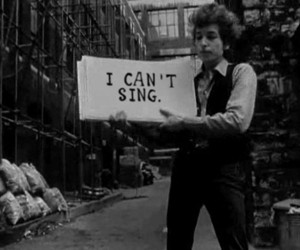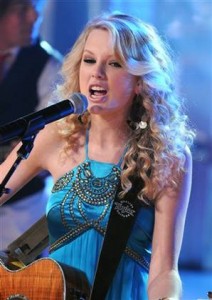Vocal Points: Good Voice/Bad Voice
posted in: Features
 In the music world, people toss around the term, “bad singer” pretty regularly. While artists in the public eye are familiar with public scrutiny, criticism as bold as “___ artist can’t sing”, can be tough to swallow. Obviously if a person is categorized as a singer, he or she must be capable of using their voice to produce sound and, therefore, carry a tune. So, how does someone get categorized as having a bad voice?
In the music world, people toss around the term, “bad singer” pretty regularly. While artists in the public eye are familiar with public scrutiny, criticism as bold as “___ artist can’t sing”, can be tough to swallow. Obviously if a person is categorized as a singer, he or she must be capable of using their voice to produce sound and, therefore, carry a tune. So, how does someone get categorized as having a bad voice?
Most times, when someone refers to a famous singer as “bad”, it is a matter of preference. For whatever reason, the listener does not think the artist’s voice is enjoyable to listen to. It could do with the quality of the voice; maybe the voice is high-pitched, breathy, gravelly, nasally, thin. Still, there are artists with high-pitched, breathy, gravelly, nasally, thin voices who are successful.
What makes audiences like and appreciate particular voices can be hard to determine, but it is clear that expectations of voices are different depending on genre of music. For example, folk music is a genre which tends to feature voices with more character and less technical training. Why is this? Well, folk is a genre which has always been about telling real stories about real people. Therefore, the quality of the voice needs to portray the tale in a realistic way, whether it is rough or soft and sweet.

Bob Dylan is a great example of a singer whose success came from how well his voice conveyed his message. He was most popular during a time of social unrest, and the expressiveness and roughness of his voice worked in his favor. While Dylan’s voice has often been criticized, it is one of the most well-known, distinct voices in music history. Tom Waits and Kris Kristofferson have similar vocal notoriety. Both have voices which are gruff and worn, but they use these qualities to tells their unique stories, oftentimes tales of heartbreak and hard times.

On the other end of the spectrum is pop music. Pop music has completely different expectations, mostly because of pitch-correction technology, which has trained us to to expect every note to sound perfect. Yet, this doesn’t mean pop artists have flawless voices. In fact, most have average voices, which can be slightly sharp or flat in performance, leading to audience criticism. Taylor Swift is an artist whose voice has been called into question since her live performances do not match her recorded material. Same goes for Ashlee Simpson and Ke$ha, who have both had successful careers, but when called to use their voices live, their voices often fall short.
What it comes down to is this: we are human, and each of our voices are going to be different. So why are we trying to cover that up? We can’t say that Taylor Swift has a better voice than Bob Dylan, or vice versa, but what we can say is that Dylan’s voice is more memorable and distinct, whereas Swift’s is easily forgettable and can be clumped in with other pop singers’. Differences are not flaws, they are what make us individuals, and I think artists should embrace that.
